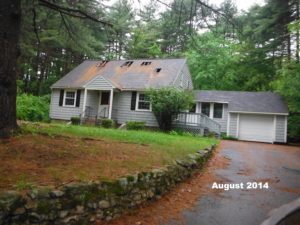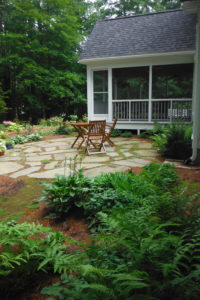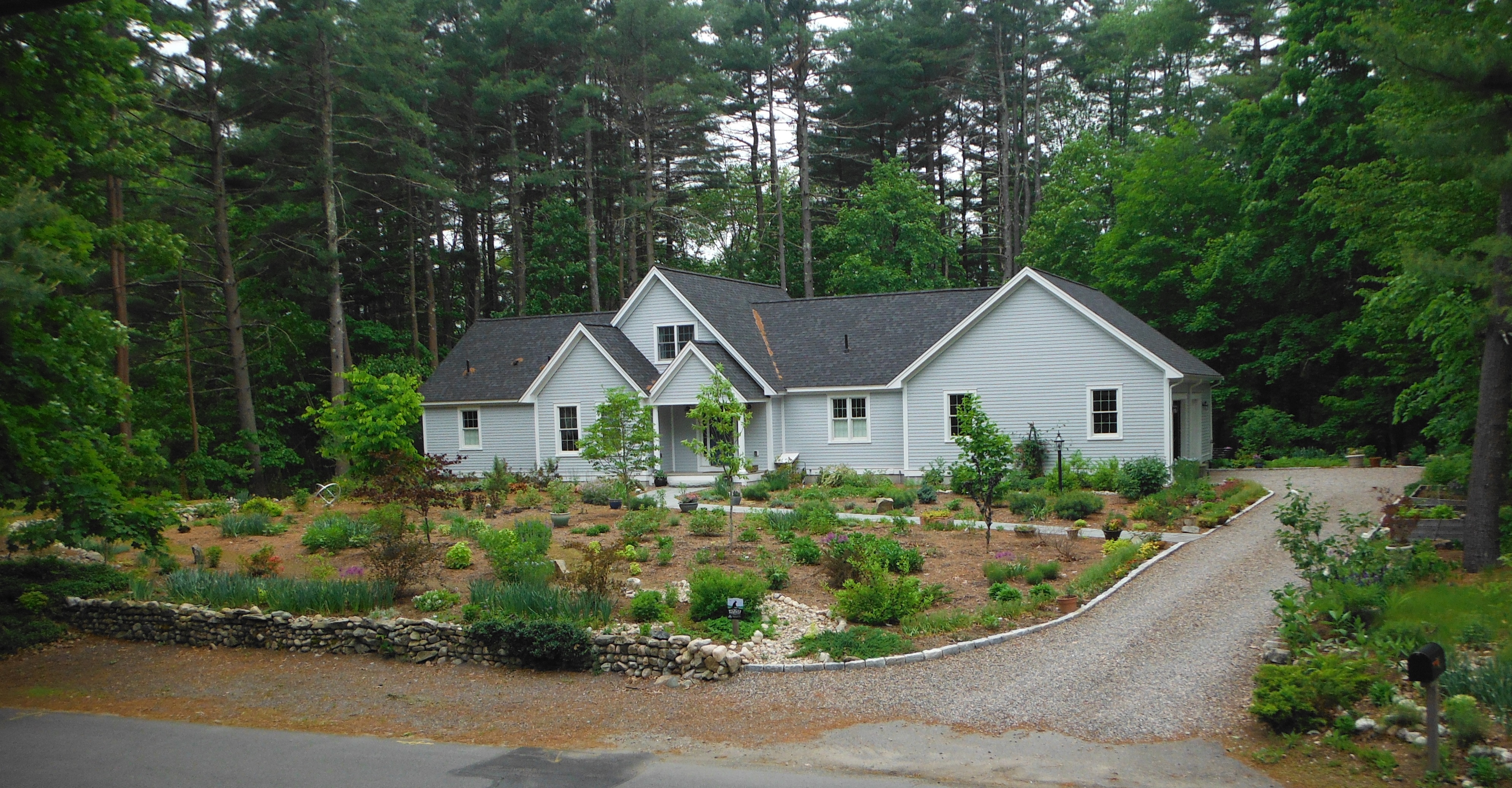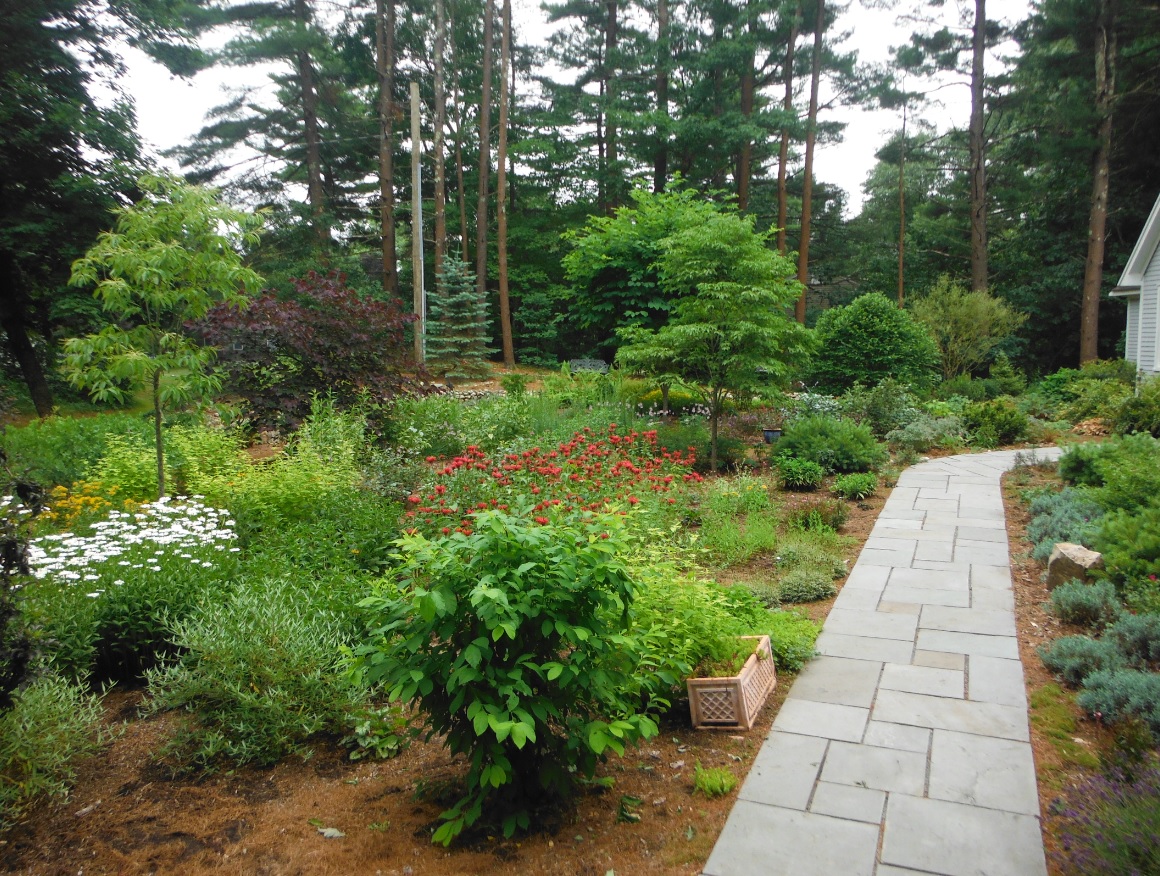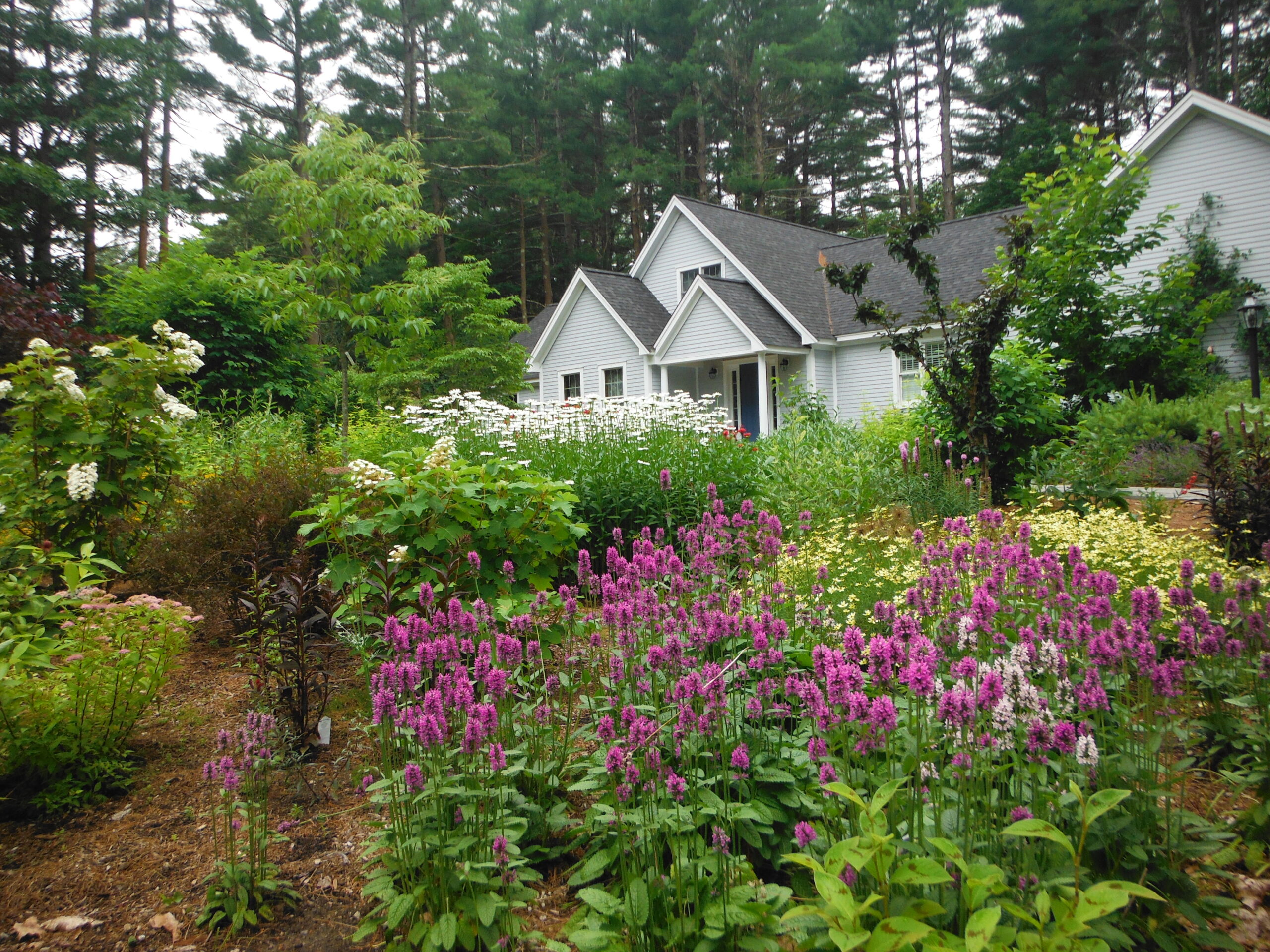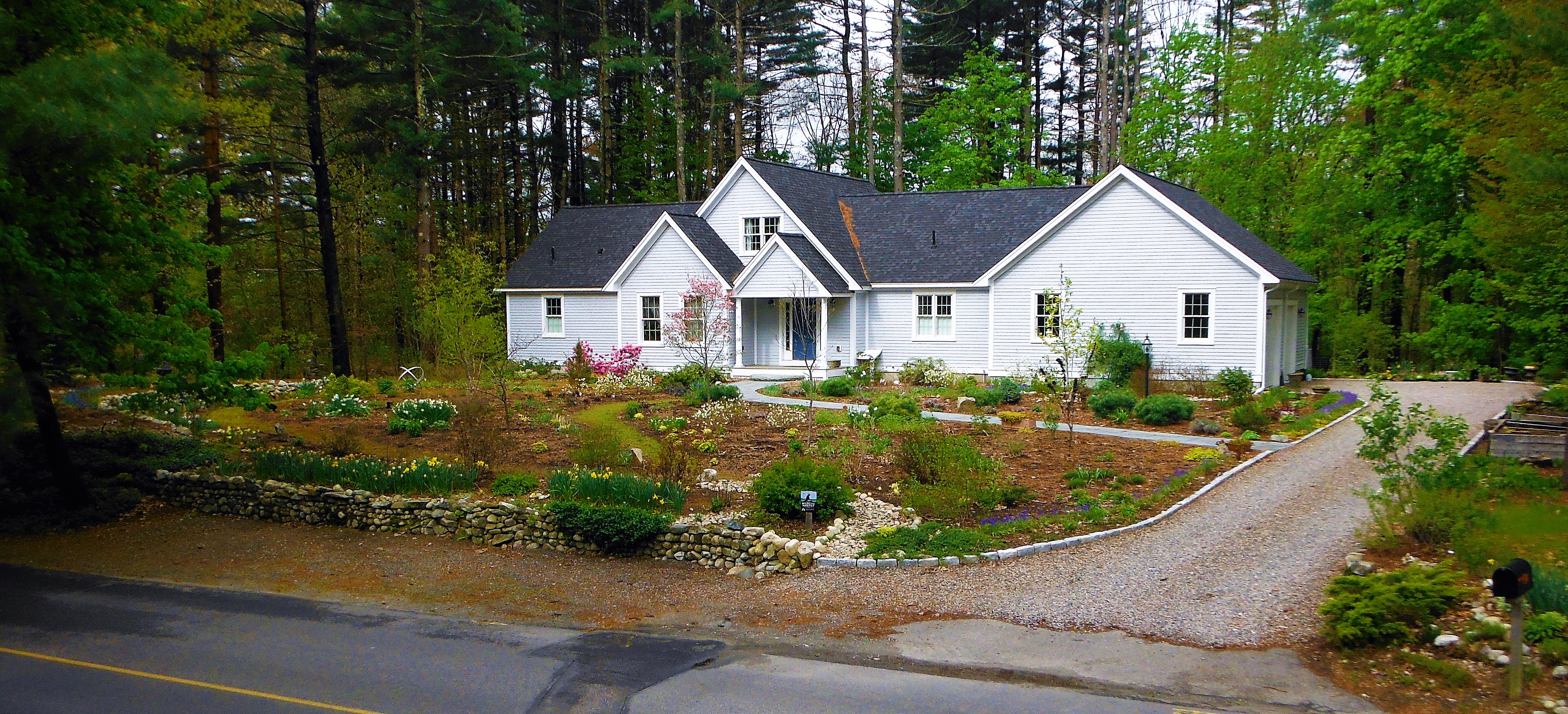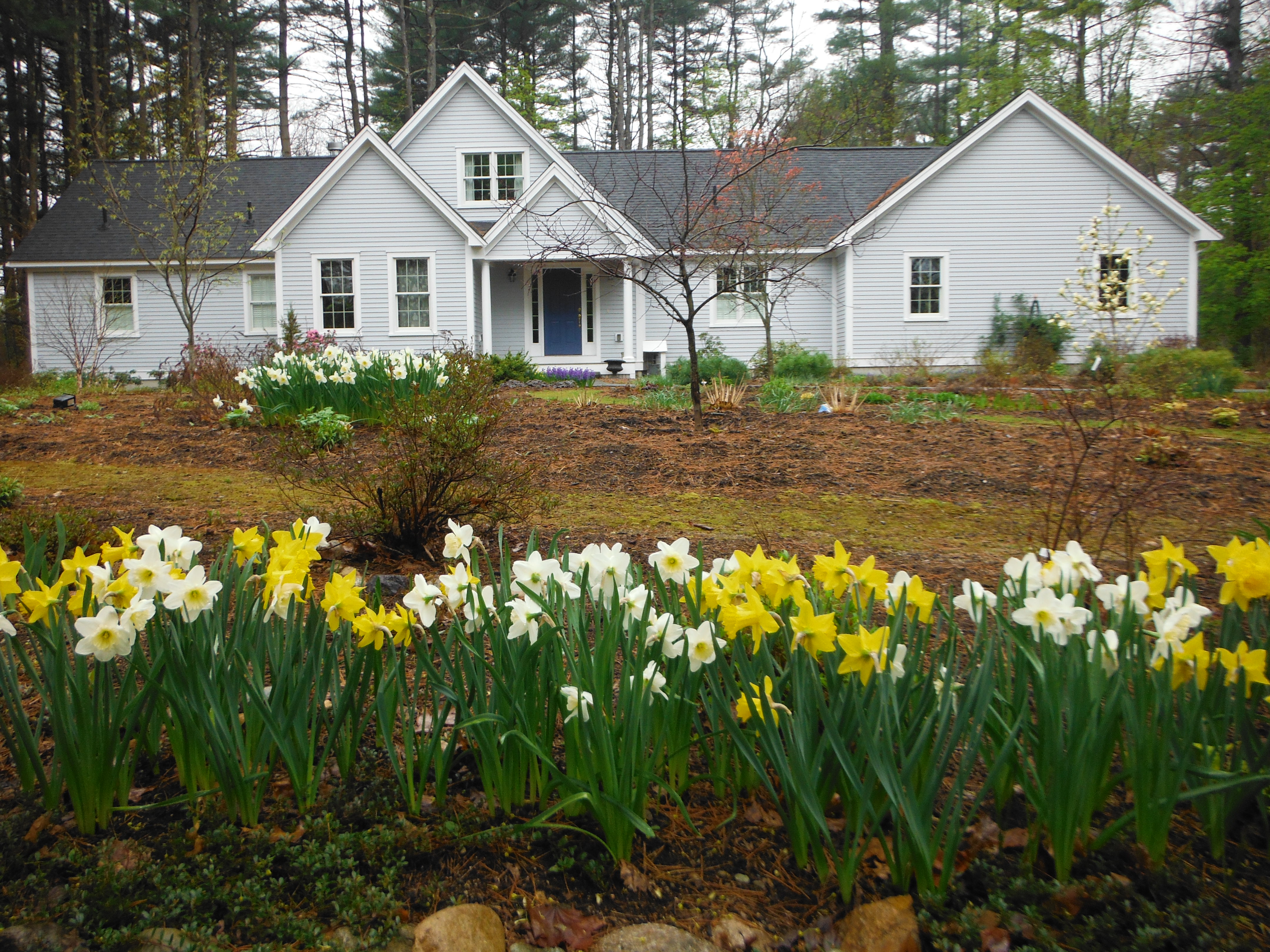My Garden – 2015 to Present
After 16 years at Wild Holly Lane, my husband and I decided it was time to to downsize. Leaving behind our mature garden was a hard decision, but it was also an opportunity to create an entirely new garden built on the foundation of the gardening knowledge I have accumulated in the past decades.
This is our garden at the end of June 2024. Everything in this photo was planted beginning in June 2015. While no garden is ever ‘mature’, ours’ is clearly approaching that status.
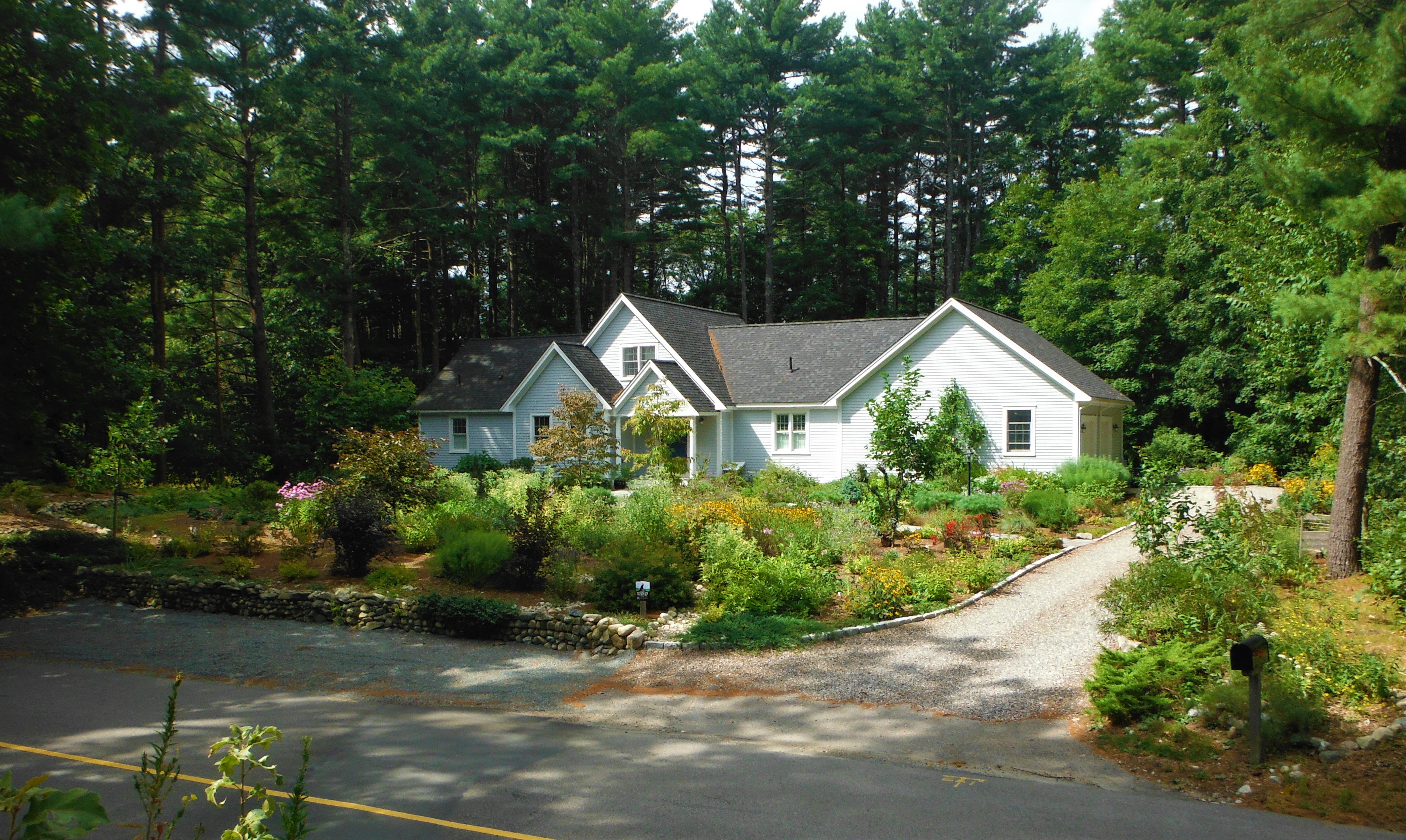
By contract, here is the garden in September 2019, the end of our fifth season of creating the garden.
We started with a blank slate. It was an old, badly neglected house; hidden behind a forest of end-of-life white pines and amid a sea of invasive plants. But it was also a gem of a site: an acre and a half on a scenic road, yet walking distance to a vibrant ‘downtown’. The front of the property was a gentle upward slope. The back acre was wetlands with vernal pools and a brook – all part of a 20-acre wetland preserve. We tore down the old house and put up our 2100-square-foot ‘dream retirement house’. Our first act as gardeners was to remove 947 cubic yards of ‘builder’s crud’ and replace it with a like amount of loam.
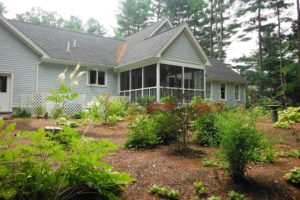
Because we abut wetlands, the rear of the house uses an all-native palette of flowering plants and shrubs to make the transition between the ‘cultivated’ garden and the undisturbed wetlands.
My goal was to establish a pollinator-friendly garden that would be easy to maintain. Apart from what I call some ‘friendly aliens’ (hosta and bulbs), the garden is all native, with a focus on seasonally blooming trees and shrubs. Another goal was to demonstrate that a house without a lawn can be even more beautiful than one with grass. Thus, the half acre that comprises our front garden has no turf of any kind; only ground covers and mulch… plus twelve specimen trees, 70-plus shrubs, several hundreds perennials, and 6000 (and counting) bulbs. Pathways within the garden are light-foot-traffic-tolerant moss.
It is also an opportunity to employ environmental sensitivity. The driveway is fully permeable crushed rock. The rear patio is Pennsylvania flagstone assembled to allow water to percolate between stone segments. Four rain barrels capture roof rainwater, and overflow goes directly to the wetlands behind us via six underground viaducts. In front, rather than use gutters, rainwater flows off the roof into four feet of crushed rush to replenish ground water. Our goal is that no rainwater falling on our property ends up in our town’s storm drains; and water flowing into the wetlands is not contaminated by nutrients.
It is a garden than will grow and mature. In this 2024 gardening season, it is now nine years old, and approaching maturity. The hardscape is fully in place, but the landscaping will continue to be a work-in-progress for as long as we line here. The gardeners mnemonic of ‘sleep’, ‘creep’, ‘leap’ applies. We are solidly in the ‘leap’ phase. Please plan to visit this page often as the garden grows.
* * * * *
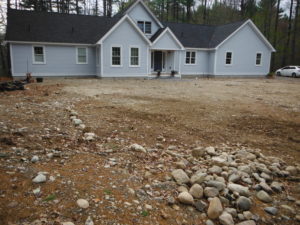
Above: We started with lifeless ‘builder’s crud’. Below: The top 18″ was replaced by new loam, on top of which is three inches of mulch.
Friends have asked for a pictorial history of how my property has evolved. This first photo (immediately at left) shows the house in May 2015. Forty end-of-life pines were taken down in August 2014 and the foundation was poured at the end of September. The core house (amazingly, this is a modular home) was erected on October 9, 2014. However, putting modules in place was just the beginning of a process that involved building a garage and porches, plus finishing much of the interior of the house, which took until April 2015. During the intervening seven months, cranes and trucks regularly compressed the rocks and soil into a lifeless pancake. That was when I realized that the ‘soil’ was worthless ‘builder’s crud’ which would need to be removed before landscaping could commence. In May 2015, I began transforming the half-acre of plant-able area around the house.
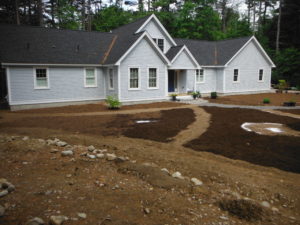 First, a landscape contractor removed the top 18 inches of ‘crud’ (soil is too polite a word) – 947 cubic yards in all – and replaced it with 950 cubic yards of screened loam. At the same time, the ‘hardscape’ was built – a flagstone patio (above, right), a bluestone sidewalk, and a crushed-stone driveway. We then added a further 50 cubic yards of dark brown mulch to prevent weeds and stop soil from blowing. We began planting the first trees and shrubs in early June and marked out where walkways would facilitate movement around the garden. I focused on natives trees with distinctive blooms: Oxydendrum (sourwood), Cornus florida (American dogwood), Amelanchier (shadbush), Cladrastis kentuckea (Yellowwood), Cercis canadensis (redbud ‘Burgundy Hearts’), and Magnolia ‘Elizabeth’. The shrubs I chose are also tough natives that bloom through the season, including cultivars of Itea, Fothergilla, Clethra alnifolia, Hydreangea quercifolia, , Vaccinium, Ilex, and Rhus aromatica. Instead of grass, I have used a profusion of perennials, many of which double as ground covers. Finally, though not native, 6000 bulbs (mostly narcissus and hyacinth varieties) provide an early and mid-spring display of color.
First, a landscape contractor removed the top 18 inches of ‘crud’ (soil is too polite a word) – 947 cubic yards in all – and replaced it with 950 cubic yards of screened loam. At the same time, the ‘hardscape’ was built – a flagstone patio (above, right), a bluestone sidewalk, and a crushed-stone driveway. We then added a further 50 cubic yards of dark brown mulch to prevent weeds and stop soil from blowing. We began planting the first trees and shrubs in early June and marked out where walkways would facilitate movement around the garden. I focused on natives trees with distinctive blooms: Oxydendrum (sourwood), Cornus florida (American dogwood), Amelanchier (shadbush), Cladrastis kentuckea (Yellowwood), Cercis canadensis (redbud ‘Burgundy Hearts’), and Magnolia ‘Elizabeth’. The shrubs I chose are also tough natives that bloom through the season, including cultivars of Itea, Fothergilla, Clethra alnifolia, Hydreangea quercifolia, , Vaccinium, Ilex, and Rhus aromatica. Instead of grass, I have used a profusion of perennials, many of which double as ground covers. Finally, though not native, 6000 bulbs (mostly narcissus and hyacinth varieties) provide an early and mid-spring display of color.
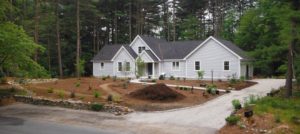
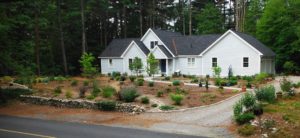 Here is the garden at the end of August 2015 (left) and 2016 (right). The photo at the top of the page shows the garden as it appears now. While we’ve continued to add and replace shrubs and perennials (always using natives). This year – 2024 – will primarily be a year of allowing existing perennials to ‘fill in’ spaces. The photo at the bottom of the page shows the front of the property on May 31, 2018.
Here is the garden at the end of August 2015 (left) and 2016 (right). The photo at the top of the page shows the garden as it appears now. While we’ve continued to add and replace shrubs and perennials (always using natives). This year – 2024 – will primarily be a year of allowing existing perennials to ‘fill in’ spaces. The photo at the bottom of the page shows the front of the property on May 31, 2018.
I recognize this is not everyone’s idea of ‘the perfect garden’: a home with children needs a lawn or other play area and even perennials need maintenance. We designed our ‘retirement dream home’ to be one that we could ‘age’ into gracefully without retrofitting. The garden is designed on the same principles. There is no grass to mow or need to edge. As the garden fills in, its maintenance requirements will decrease. In the meantime, though, the garden is a delight to neighborhood children because it is alive with birds, bees, and butterflies. There is always something in bloom. It may not be perfect for everyone, but it is perfect for us.
2019 notes
In autumn 2018 we added a further 600 bulbs to the 3400 already in place. Are 4000 bulbs enough to make an impression? The May 2019 photo below helps answer the question. Also below is a mid-May photo showing a somewhat-belated spring (cold and damp) entry of flowering trees and shrubs. Notable is the fothergilla and cornus florida.
This was primarily a year of adding fill-in perennials and shrubs. The driveway-side native perennial border is mostly complete and, in the autumn, we added another 400 bulbs.
Finally, we had our first test as a way station for migrating pollinators. Here is a clip of Monarchs at our garden in late September 2019: Monarchs 17 seconds
2024 notes
The garden is truly starting to come into its own. Here’s pictorial review.
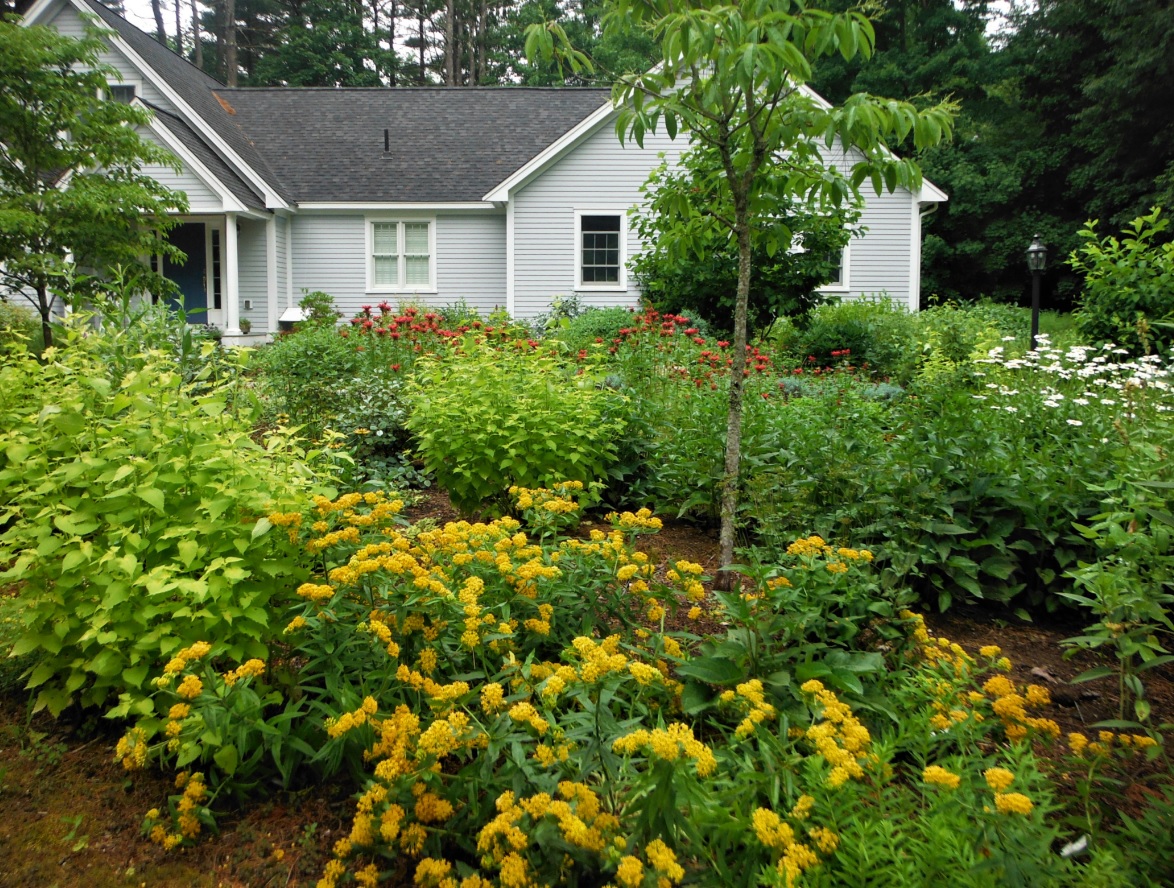
Ascepelus ‘Mellow Yellow’ is one of the new cultivars of butterfly weed, and more than lives up to its name as a pollinator magnet.

